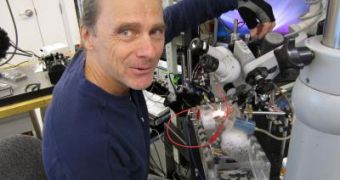A group of investigators in the United States believes it may have discovered a new approach towards creating more advanced cochlear implants for the deaf and artificial eyes for restoring sight.
Their discovery may also be used to develop new treatments for movement disorders including Parkinson's disease, as well as for those who have difficulties maintaining their balance.
In a recent study, the team used infrared (IR) light to cause contractions in rat heart cells and toadfish inner-ear cells. The experiments, which were conducted at the University of Utah, were successful.
What the researchers basically did was make these two types of cells send electrical signals to the animals' brains via dedicated neural pathways. The work was conducted with funding from the US National Institutes of Health (NIH).
“We're going to talk to the brain with optical infrared pulses instead of electrical pulses,” explains UH professor of bioengineering Richard Rabbitt, the senior author of the research efforts.
Details of the research were published in the March issue of the esteemed Journal of Physiology. The paper also includes a description of a proposed cardiac pacemaker, which could use optical signals in the IR portion of the electromagnetic spectrum instead of electrical impulses.
However, Rabbitt and his team did not insist on this, because of the efficiency that electrical pacemakers have today. “I don't see a market for an optical pacemaker at the present time,” he says.
Until now, experts had a hard time believing that short pulses of IR light – sent via a thin fiber optics cable – could elicit the same effect on heart and inner-ear cells as an electrical signal, of the kind neurons help transmit around the clock.
The team leader explains that existing cochlear implants usually only produce 8 frequencies of sound, due to the fact that their receptors only send data to 8 electrodes. Using the new approach, it may be possible to restore even more hearing capabilities in disabled people soon.
“A healthy adult can hear more than 3,000 different frequencies. With optical stimulation, there's a possibility of hearing hundreds or thousands of frequencies instead of eight,” Rabbitt explains.
“Perhaps someday an optical cochlear implant will allow deaf people to once again enjoy music and hear all the nuances in sound that a hearing person would enjoy,” he goes on to say.
UH scientists obtain their light pulses from a diode, the same type of light source used in commercially-available laser pointing devices. The only difference is the wavelength at which the diode produces light, the team concludes.

 14 DAY TRIAL //
14 DAY TRIAL //